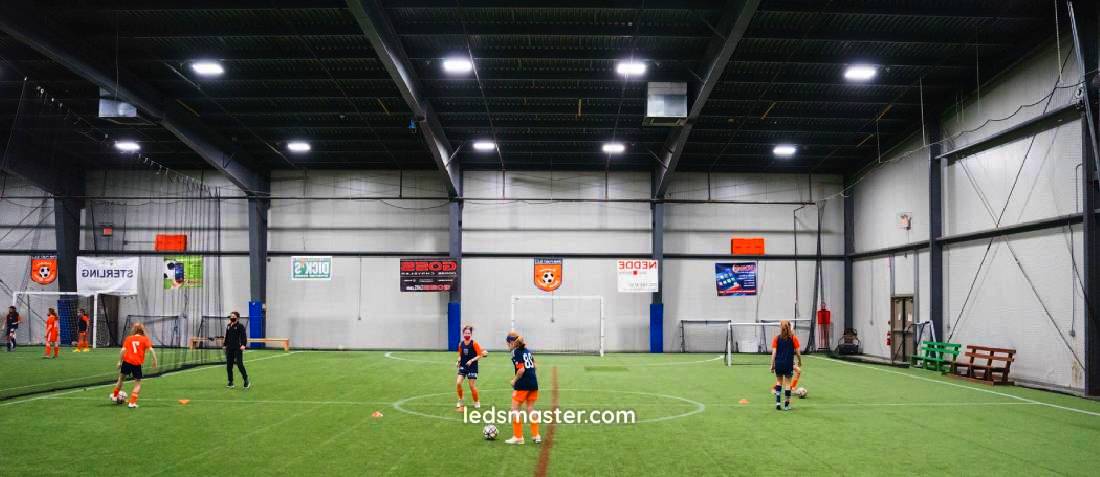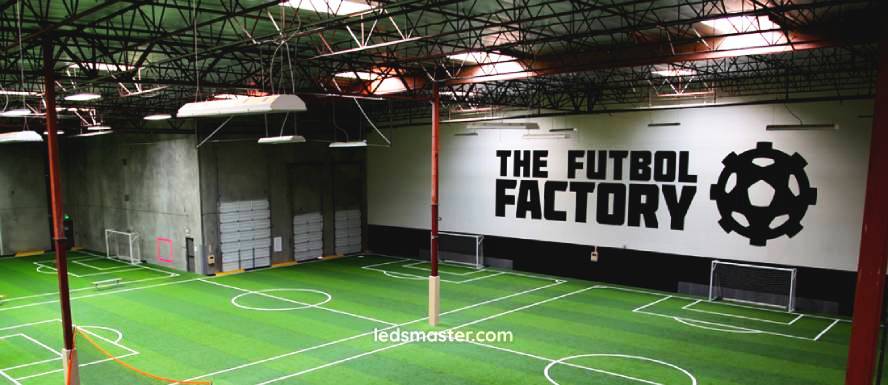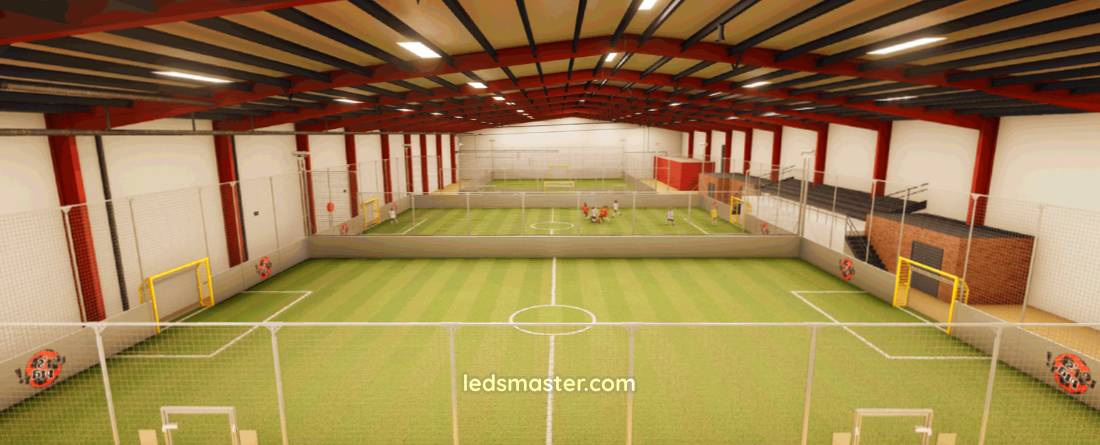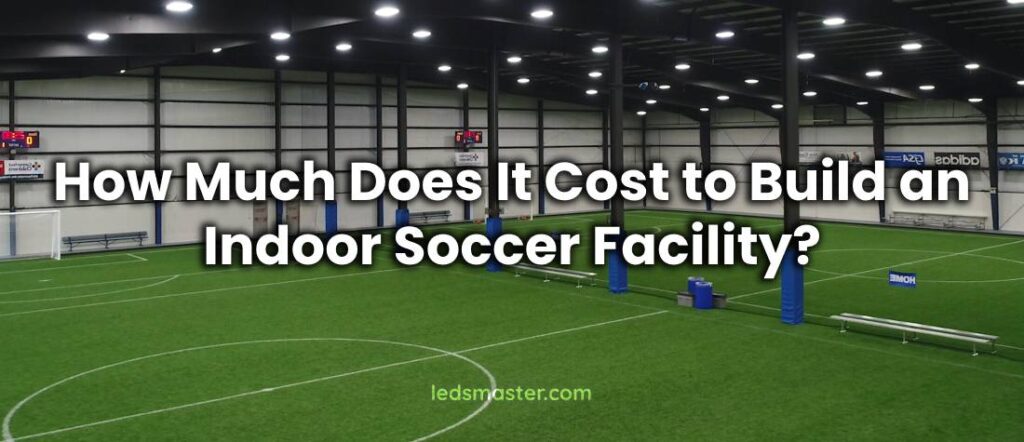Indoor soccer facilities have surged in popularity, offering players the chance to engage in the sport year-round, free from the constraints of unpredictable weather. As soccer continues to grow as a beloved pastime across various communities, many entrepreneurs and organizations see potential in investing in these facilities.
| Cost Component | Estimated Cost | Details |
|---|---|---|
| Land Acquisition | $1,000,000 – $3,000,000 | Price varies by location; includes purchase price and land preparation (grading, clearing). |
| Construction Costs | $2,000,000 – $5,000,000 | Total for building structure, roofing, insulation, flooring, and other construction needs. |
| Building Structure | $1,200,000 – $3,000,000 | Costs for foundation, walls, and roofing materials. |
| Flooring | $400,000 – $800,000 | High-quality turf or other flooring options suited for soccer, including installation. |
| Lighting Systems | $100,000 – $300,000 | Installation of high bay lighting systems to illuminate the playing fields and seating areas. |
| Ventilation Systems | $150,000 – $250,000 | Heating, ventilation, and air conditioning (HVAC) for player comfort and air quality. |
| Restrooms and Locker Rooms | $100,000 – $200,000 | Construction and fixtures for restrooms and locker facilities to accommodate players and guests. |
| Additional Facilities | $500,000 – $1,500,000 | Includes concessions, spectator seating, offices, and storage areas. |
| Concessions and Spectator Seating | $200,000 – $500,000 | Areas designed for spectator comfort and food service to enhance the visitor experience. |
| Parking Lots | $100,000 – $300,000 | Construction of sufficient parking to accommodate players and spectators. |
| Equipment and Furnishings | $100,000 – $300,000 | Goals, nets, training equipment, and furnishings for lounges and meeting spaces. |
| Permits and Insurance | $50,000 – $150,000 | Costs for necessary building permits and liability insurance coverage. |
| Total Estimated Cost | $3,850,000 – $10,600,000 | Overall range depending on various factors including size, location, and facility design. |
Table of Contents
ToggleFactors Influencing Costs
When contemplating the construction of an indoor soccer facility, several variables come into play. These factors can dramatically influence the overall budget and final costs of the project.
Location
The geographical location of the facility is one of the most significant factors influencing costs. Urban areas tend to have higher real estate prices compared to rural locations. Additionally, zoning regulations can impact both the price and the feasibility of the project. Understanding local real estate trends and municipal requirements can provide clarity on initial costs.
Size of the Facility
The size of the indoor soccer facility also plays a pivotal role in determining costs. Facilities can range from small, single-field arenas to large complexes that accommodate multiple fields and various sports. The dimensions of each field, including ceiling height and available space for spectator seating, affect construction and operational expenses. A larger facility may provide more opportunities for revenue generation but will also incur higher initial and ongoing costs.
Facility Type
The type of facility chosen can significantly influence expenses. Standard indoor soccer fields will have different requirements compared to multi-sport complexes. A multi-sport facility may require additional planning for diverse sports and activities, thereby increasing construction and equipment costs.
Design and Construction Materials
The choice of design and construction materials affects both initial costs and long-term maintenance expenses. Higher-quality materials may incur more significant upfront costs but can result in lower maintenance needs and better durability over time. Architectural design choices can also impact costs, particularly if custom features are included. Therefore, it is essential to balance aesthetics with functionality and budget constraints.

Breakdown of Costs
Understanding the detailed breakdown of costs associated with building an indoor soccer facility is vital for effective financial planning. The expenses can be categorized into land acquisition, construction costs, additional facilities, equipment and furnishings, and permits and insurance.
Land Acquisition
Acquiring suitable land is often the first step in building an indoor soccer facility. The cost of land can vary significantly based on location, with urban properties generally commanding higher prices per square foot. In addition to the purchase price, land preparation and grading must also be considered. This stage involves clearing the land and ensuring it is suitable for construction, adding to the initial expenses.
Construction Costs
Construction costs represent a significant portion of the overall budget for building an indoor soccer facility. This category encompasses various elements, including the building structure, flooring, lighting systems, ventilation, and restrooms.
Building Structure
The foundation, walls, and roof of the facility are fundamental to its integrity and usability. A well-designed structure should provide adequate space for multiple soccer fields, spectator seating, and essential amenities. The choice of materials for these components influences both the cost and longevity of the facility.
Flooring
Selecting the appropriate flooring for an indoor soccer facility is crucial. Turf, which is often the preferred surface for soccer, must be durable and suitable for high-impact sports. The installation of flooring can be a substantial investment, and ongoing maintenance costs must also be taken into account to ensure player safety and facility longevity.
Lighting Systems
Proper lighting is vital for any indoor sports facility. High bay lighting systems are commonly used due to their efficiency and effectiveness in illuminating large spaces. The initial cost of installing a high bay lighting system can be offset by its long-term energy savings. Considering energy-efficient options during the planning phase can help reduce utility expenses in the future. Additional lighting requirements may also arise, such as field markings and spectator seating areas.
Ventilation Systems
Good ventilation is essential in maintaining a comfortable atmosphere for players and spectators. The costs associated with installing effective heating, ventilation, and air conditioning (HVAC) systems should be factored into the overall budget. Proper ventilation not only enhances comfort but also helps in maintaining air quality, which is vital for indoor athletic environments.
Restrooms and Locker Rooms
Facilities must also include restrooms and locker rooms to accommodate players and spectators. The design and construction of these areas should focus on maximizing space while ensuring accessibility. The costs associated with plumbing, fixtures, and maintenance can add significantly to the overall expenses.
Additional Facilities
In addition to the core components, several additional facilities can enhance the indoor soccer experience. These may include concession stands, spectator seating, storage areas, and offices.
Concessions and Spectator Seating
Creating a welcoming environment for spectators can generate additional revenue through concessions and ticket sales. Designing comfortable seating areas and offering refreshments can enhance the overall experience, attracting more visitors and increasing potential income.
Storage Areas and Offices
Storage areas are necessary for equipment and maintenance supplies, while offices can be used for administrative tasks and staff coordination. These spaces should be strategically located to ensure efficient operation and accessibility.
Parking Lots
Sufficient parking is crucial for accommodating players, spectators, and staff. The costs associated with constructing parking lots, including paving and signage, should be included in the budget. A well-designed parking area can enhance accessibility and improve the overall flow of traffic during events.
Equipment and Furnishings
A variety of equipment and furnishings will be needed to operate the indoor soccer facility effectively. Goals and nets are fundamental for the playing fields, while training equipment can enhance practice sessions and player development. Additionally, furnishings for lounges and meeting rooms create a welcoming atmosphere for players and staff.
Permits and Insurance
Before construction can commence, securing the necessary permits is essential. The costs associated with obtaining building permits and inspections can vary based on location and facility type. Additionally, liability insurance is vital for protecting the facility from potential legal issues and accidents. Budgeting for these expenses ensures compliance with local regulations and safeguards against unforeseen circumstances.

Operating Costs
Once the facility is built, ongoing operating costs must be managed effectively to ensure financial sustainability. These costs can include utilities, maintenance and repairs, staffing, and marketing efforts.
Utilities
Utilities represent a substantial portion of operating costs for indoor soccer facilities. Expenses related to electricity, water, and heating must be factored into the budget. Understanding the energy requirements of the facility can help identify strategies for cost savings, such as investing in energy-efficient appliances and systems.
Maintenance and Repairs
Regular maintenance is necessary to keep the facility in optimal condition. This includes routine inspections, cleaning, and repairs to ensure the safety and functionality of the space. Failure to allocate sufficient funds for maintenance can lead to higher costs in the long run due to the need for extensive repairs or replacements.
Staffing
The facility will require a team of staff members to manage daily operations. This includes coaches, facility managers, maintenance staff, and administrative personnel. Properly budgeting for staffing costs ensures that the facility can operate smoothly and provide high-quality services to players and visitors.
Marketing and Promotion
Attracting players and spectators requires effective marketing strategies. Allocating a budget for marketing efforts, such as advertising, social media campaigns, and community outreach, can help build awareness and drive participation in programs and events. A strong marketing presence can lead to increased revenue and a thriving facility.
Common Mistakes to Avoid
Building an indoor soccer facility can be a rewarding venture, but several pitfalls should be avoided to ensure success.
Underestimating Initial Construction Costs
Many entrepreneurs underestimate the initial construction costs associated with building an indoor soccer facility. It is crucial to conduct thorough research and engage with experienced contractors to develop an accurate budget. Understanding the total expenses involved can help avoid financial strain during the construction process.
Failing to Consider Ongoing Operating Expenses
While initial construction costs are vital, ongoing operating expenses can quickly add up. Many facility owners fail to account for these expenses, leading to budget shortfalls and operational challenges. A comprehensive financial plan should encompass both initial and ongoing costs to ensure sustainability.
Ignoring Local Zoning Laws and Regulations
Before beginning construction, it is essential to understand and comply with local zoning laws and regulations. Failure to secure the necessary permits can lead to delays, fines, and even the shutdown of the facility. Engaging with local authorities early in the planning process can help navigate these requirements.
Overlooking the Importance of High-Quality Lighting
Quality lighting is critical for player performance and spectator enjoyment. Many facility owners overlook the significance of investing in effective lighting systems. Choosing energy-efficient high bay lighting options can provide long-term cost savings while ensuring the facility remains well-lit during events.
Inadequate Market Research on Demand and Competition
Conducting thorough market research is vital for understanding the demand for an indoor soccer facility in the area. Failing to analyze the local competition and potential user demographics can lead to poor decision-making and financial losses. Identifying the target market and assessing their needs can inform program offerings and pricing strategies.
Points to Note

Several aspects can enhance the chances of success when building and operating an indoor soccer facility.
Importance of Investing in Energy-Efficient Lighting Systems
Energy-efficient lighting systems not only reduce utility costs but also create a better environment for players and spectators. Investing in modern lighting technology can result in long-term savings and improved overall experiences.
Consideration of Multi-Purpose Use for the Facility
Designing the facility for multi-purpose use can enhance its versatility and revenue-generating potential. By accommodating various sports and activities, the facility can attract a broader audience and maximize utilization throughout the year.
Potential Return on Investment from Hosting Events and Leagues
Hosting tournaments, leagues, and special events can generate significant revenue for indoor soccer facilities. Strategic planning and marketing can help attract organizations and teams, creating a steady stream of income and increasing community engagement.
Engaging with the Community for Support and Participation
Building relationships with local soccer clubs, schools, and community organizations can foster support for the facility. Engaging with the community through outreach and partnership initiatives can enhance participation rates and ensure the facility meets the needs of local players.
Conclusion
Building an indoor soccer facility is a great opportunity to boost community engagement and support the sport. Knowing the costs—from land acquisition and construction to ongoing operational expenses—is crucial for effective planning and long-term success. Conducting thorough research, connecting with the community, and focusing on quality can help facility owners avoid common pitfalls. Strategic funding and partnerships can also enhance the facility’s potential. A well-planned indoor soccer facility can thrive, benefiting the community and nurturing a love for soccer among players of all ages.

